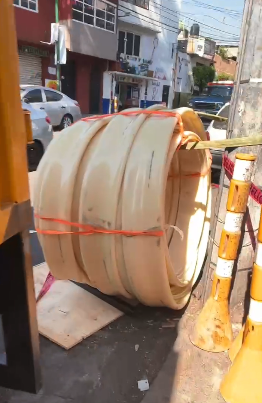Anyue’s Fold & Form Liner Overcomes Extreme Challenges in Mexican Water Pipeline Project
- Layla Tong
- May 30
- 1 min read
A recent water pipeline rehabilitation project in Mexico put Anyue’s Fold & Form liner technology to the test—and the results demonstrated why this solution is gaining global recognition. Faced with a deteriorating DN100 pressure pipeline in rugged terrain, the project presented three major obstacles: a severe diameter reduction from 100mm to 75mm, a dramatic 30-meter elevation drop, and inaccessible sections where traditional equipment could not reach.


Anyue’s solution relied on its NSF 61-certified PVC liner, engineered to handle high-pressure applications up to 16 bars—far exceeding typical municipal water systems. The proprietary internal heating system reduced installation time by 30% while cutting fuel consumption by 40%, proving critical in the remote location. Meanwhile, the patented Pressure Pipe End Flanging Technology ensured secure, leak-proof connections despite the extreme elevation changes.


What made this project particularly noteworthy was the liner’s ability to conform to the pipeline’s aggressive diameter reduction without compromising structural integrity. The 80-meter continuous installation, completed in just three days, showcased the material’s flexibility and durability. Onsite training by Anyue engineers further ensured smooth execution, even in hard-to-reach segments.

This success reinforces Fold & Form lining as a leading solution for complex pressure pipeline rehabilitations. With a track record spanning DN100 to DN1200 projects, Anyue continues to push the boundaries of trenchless technology—proving that even the toughest pipeline challenges can be overcome with the right innovation.

For utilities and contractors facing similar obstacles, this case serves as a compelling example of how advanced materials and engineering expertise can deliver efficient, long-lasting results. Anyue’s decade of field experience and PhD-backed R&D ensure that its solutions remain at the forefront of pipeline rehabilitation worldwide.




Comments